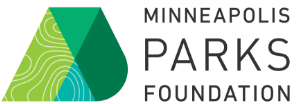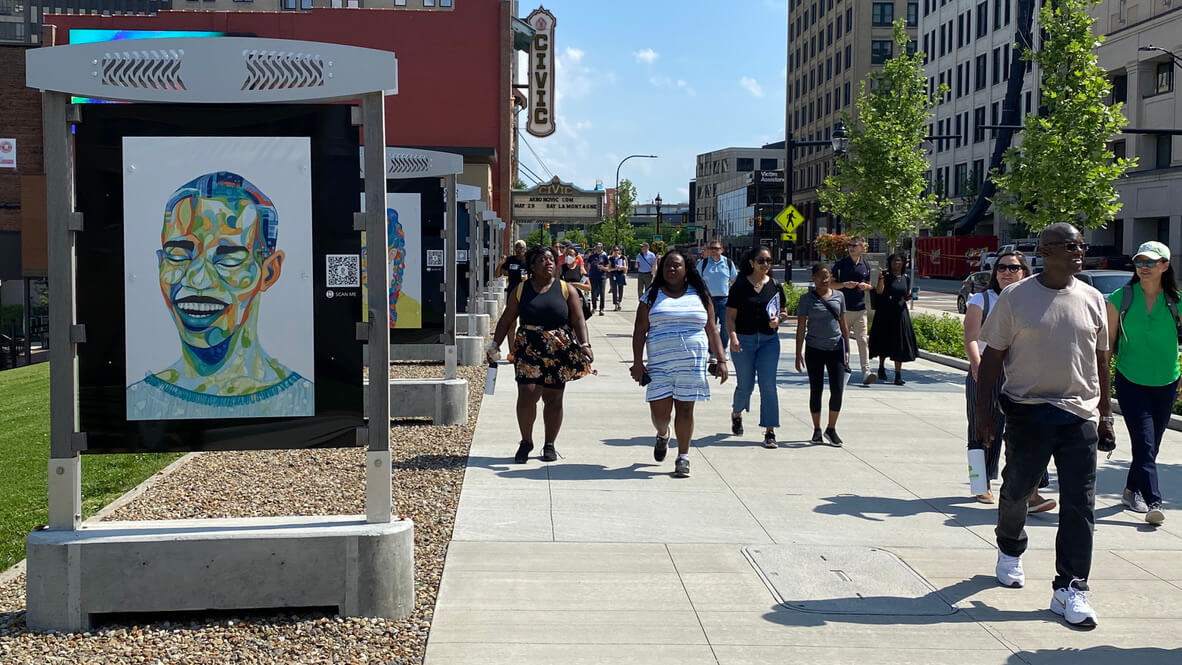Earlier this month, I joined the Minneapolis Parks Foundation’s Janette Law and more than 25 of our colleagues in the Reimagining the Civic Commons 12-city national learning network for a special visit to Akron, OH. Perhaps best known as the hometown of NBA champions LeBron James and Stephen Curry (and as the one-time headquarters of four tire companies), Akron is now home to about 200,000 residents. It’s also one of the earliest and most successful cities engaging in Reimagining the Civic Commons, which is modeling how strategic community-led investments in public spaces builds trust and creates social equity and economic opportunity.
Our three-day and 27-event itinerary – dubbed a Learning Journey by RCC – took us through several of the city’s most significant public spaces, including Summit Lake, the downtown business and residential district, and along the Ohio & Erie Canalway Towpath Trail. Along the way, we met with dozens of local civic, community, and business leaders and gained a greater understanding of (in the words of the lead convener, Dan Rice) Akron’s “secret sauce.”
Below are a few of my highlights from the experience. Read more about Akron Civic Commons here. And learn about our Minneapolis Civic Commons work.
—
What stories had the greatest impact on you?
It is clear to me that Ohio & Erie Canalway Coalition has embraced Reimagining the Civic Commons (RCC) with 15 organizations, including five foundations and four governmental agencies that support its work.
The most impactful experience for me was talking to long-term residents of a community called Summit Lake. One resident who participated in many Akron Civic Commons activities at the Summit Lake Community Center and the Reach Opportunity Center — doing everything from computer classes to canning and cooking demos. In addition, this resident also volunteers with RCC-Akron, acting as a steward and community advocate. Another Summit Lake resident shared with us that until she became involved with the Civic Commons, she did not see herself as a community leader, but her involvement with RCC-Akron transformed how she sees herself and the role she can now play in the community as a leader.
One of the nine principles RCC talks about how important it is to “shift the behavior of citizens from consumers to producers in order to cultivate stewards and champions of the assets.” Getting testimonial feedback like these from actual residents is powerful evidence that RCC-Akron is working.
What was a key ingredient in the “secret sauce” of Akron’s success?
Likewise, Daniel Rice, President & Chief Executive Officer of Ohio & Erie Canalway Coalition, demonstrates high level of core competencies as a convenor by creating a platform for the collaboration and its participants. Rice did the following well:
- Clarifying the purpose of the collaborative leadership effort;
- Developing a preliminary list of stakeholders and leaders to invite to the table;
- Securing high-level stakeholder buy-in, as well as intellectual and financial support.
Rice’s skill set as an organizer and administrator of the collaboration, as well as carrying out the preliminary and follow-up tasks, ensured that the process was moving forward. In addition, Rice led from a place of deep understanding that he and his organization cannot achieve the RCC-Akron vision as an independent organization, but only through collaboration/partnership with multiple organizations over different sectors like arts/entertainment, government, and private businesses.



What were some insights you learned from RCC Akron partners?
One of the most insightful comments was made by a staff member of the Akron Metropolitan Housing Authority regarding their organizational culture. Like many government agencies, they learned that sometimes you need to be silent and listen so that you can learn. Too much focus on “checking off the boxes” and institutional timetables can get in the way of meeting the needs of the community and residents.
Panelists on the topic of “philanthropy as collaborators” also shared some wisdom with us.
Philanthropy is facing more and more tougher questions from non-profits and their constituents about how effective philanthropy’s work in is in improving people’s lives and the communities they live in. In the case of working with foundation governing boards, it is always better to propose an innovative approach to them than have them struggle to evolve among themselves.
Finally, when working with Reimagining the Civic Common partners and residents one important and impactful question to ask all the time is, “How can I help you?”
Observations & Insights, Main Learning:
- Let other people take credit for the work, if that is what it takes to get buy-in.
- Ask residents and potential collaborators, “How can I help?”
- Parks and green spaces can help get people more interested in coming downtown.
- Philanthropy is facing more and more tougher questions from end users/beneficiaries.
- Foundation and non-profit trustees need exposure to different experiences and places, to increase their level of awareness and understanding.
- “Move at the speed of trust.” One government agency learned that sometimes you need to be silent and listen so that you can learn. Too much focus on item checks off and timetables.




